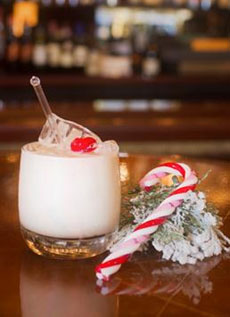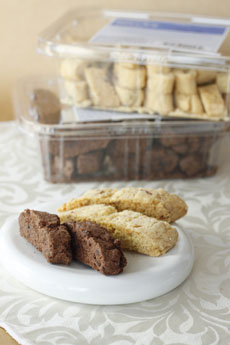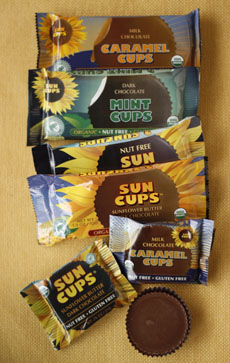|
*The original chocolate beverage, made by the Olmecs in Mexico from around 1300 B.C.E., used ground cacao beans—cocoa powder and chocolate would not be invented, in Europe, for a few more centuries. Xocolatl (pronounced cho-co-lah-tay) mixed the ground beans with water and flavored it with local spices, including chile, cinnamon, musk, pepper and vanilla, and thickened with cornmeal; then frothed in a bowl. No milk was used. When the Conquistadors returned to Europe with cacao beans, water was still used. The English added milk in 1657. See the chocolate timeline.
It inspired today’s tip (no, it’s not shaving chocolate bars into hot milk or cream—we suggested that a few hundred tips ago).
Today’s Tip (Finally!): Chocolate-Covered Marshmallows-On-A-Stick
We adapted the Petrossian product concept to something that works with conventional hot chocolate and cocoa mixes (the difference between cocoa and hot chocolate).
We happened to have some artisan marshmallows from 240 Sweet. And we had those Recchiuti chocolate bars we wrote about on Monday.
Steps 1 to 3 can be done a day in advance.
1. Insert lollipop sticks into marshmallows. They’re also called cookie sticks and cake pop sticks. The six-inch size is best for large mugs; the four-inch side for standard-size teacups. You can also use thick bamboo skewers. Stand skewered marshmallows on a sheet of wax paper.
2. Melt a plain dark chocolate bar in the microwave. Even if you prefer milk chocolate, dark chocolate adds a richer flavor. Cut the bar into uniform pieces, the smaller the better. Be sure to use a microwave-safe bowl that remains cool or just slightly warm. Melt at a 50% power setting, to avoid scorching the chocolate; or heat the chocolate in 30-second intervals and stir between each interval. If your microwave does not have a turntable, manually rotate the bowl’s position after each interval. The chocolate is ready when most, but not all, is melted. Remove from the microwave and stir until completely melted.
3. Dip marshmallows into melted chocolate. Swirl to get an even coating on each marshmallow. Hold until the chocolate is firm; then set on the wax paper to continue drying.
4. Make your favorite hot chocolate or cocoa (here are reviews of our favorites). Serve with a chocolate-covered marshmallow-on-a-stick on a service plate with the cup or mug. Each person can do as he/she pleases: Eat the marshmallow from the stick or swirl it in the cup to add rich chocolate flavor and creamy melted marshmallow.
Or, buy the Hot Chocolate-On-A-Stick from Petrossian.
|







